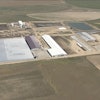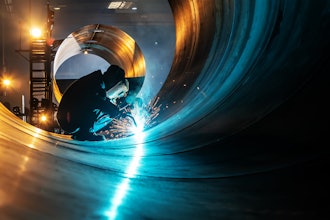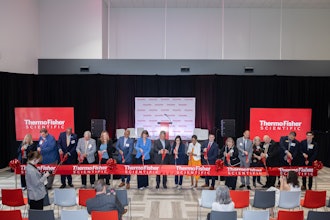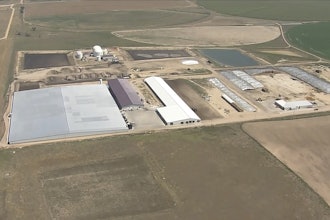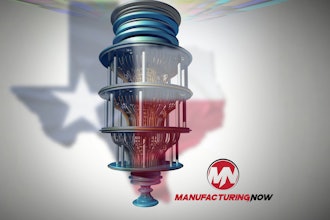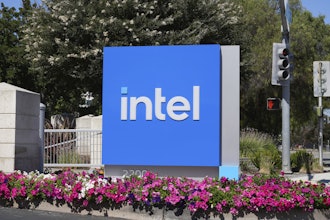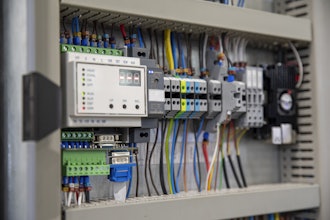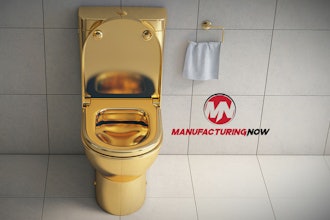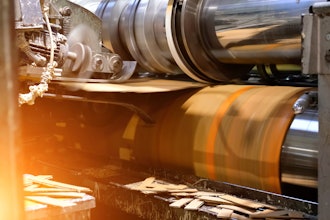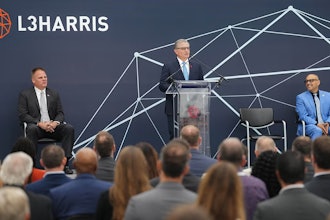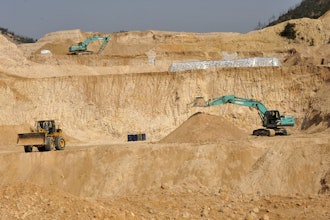According to the Metal Building Manufacturers Association (MBMA), pre-engineered metal buildings account for more than half of all new, low-rise one- and two-story, non-residential construction in the U.S. With this abundance of metal buildings on the market comes a variety of roofing problems.
The typical metal building roofing system is composed of 24- to 26-gauge coated steel roof panels installed on structural steel members called purlins that range from 14- to 18-gauge in thickness. Purlins are commonly cold-formed "C" or "Z" members installed 5-ft. on center. Roof panels are secured to the purlins with screws, or, in standing-seam metal-panel systems, with concealed clips that are secured to the purlins. In fact, screws are used not only to secure the panels to the purlins, but to "stitch" the panels together at the sides and end laps. Rubber or neoprene washers are installed under fastener heads, and a tape or sealant is used to waterproof the panel side laps and end laps. Caulk or tape is often introduced to create a hydrostatic joint. Any metal roof more than 10 years old can experience failure for a variety of reasons. A major area of vulnerability is at the end and side laps of the metal panels where the original butyl tape or caulk seals age and fail. Another is at the fasteners. Metal buildings expand and contract as temperature changes, often resulting in enlarged fastener holes and damage to fastener seals, which allows water into the building. Other concerns are the side and end laps of the panels. Caulks and sealant used in these areas often deteriorate, or the sealant is lost, exposing the building to weather.
Other reasons for metal-roof failure include: poor design and detailing; inadequate drainage; improperly aligned panels; inferior workmanship or materials; and worn coatings on metal panels.
To properly repair an aging or leaking metal roof, the panels in question should be removed and replaced. All fasteners and flashing should be checked and replaced as necessary. This can be a costly and time-consuming project that can interrupt business. Often, it's more economical to replace the roof. Sometimes it makes sense to retrofit with single-ply membranes, BUR (built-up roofing), coating systems or new metal roof panels. Generally, there are five options to consider:
Metal-roof replacement. This involves removing the old metal roof and replacing it with a new metal one. This is the most expensive option and is generally only done in cases where it is not feasible or desirable to recover the existing metal roof. The advantage is that the building owner can start fresh with a new roof. Disadvantages include price, which can be in excess of $10 per sq. ft., disruption to building users, and the chance that the roof will eventually suffer the same problems as the original.
Metal-roof recover. Installing a new metal roofing system over an existing one is an option if the building is strong enough to withstand the added weight. While a metal-roof recover offers the same durability and other advantages of the original metal roof, it is also subject to the same problems that made the original roof fail, and can be costly.
Coatings or liquid-applied systems. The most common coatings or liquid-applied systems are elastomeric. They are typically applied after the roof has been cleaned, damaged panels replaced, and a primer used on rusted areas. Flashing and exposed fasteners are also sealed, and flashing compounds and reinforcing fabrics are applied at laps. The coating is then applied repeatedly until the desired thickness is achieved.
This option can be cost-effective and good at addressing corrosion. Most coatings are white, resulting in energy savings. Disadvantages are that the coating doesn't "give" much with the expansion and contraction of the metal roof, subjecting it to cracks at joints and seal areas. This may require reappli-cations of the coating and flashing. In addition, it is not uncommon to recoat a roof every five years of service life, which can be expensive. Performance is also sensitive to surface preparation and weather conditions at the time of application.
Polyurethane-foam recover. With this option, sprayed polyurethane foam is applied directly to the existing metal roof in a manner similar to the way a coating is applied. After replacing damaged panels and treating surface corrosion, the foam is spray-applied, usually in several passes to achieve a thickness of at least 1 in. Then a special surface coating is applied to protect the foam from ultraviolet damage.
Advantages of this option are that it adds R-value to the roof, and does not require reinforcing fabric at the laps and fasteners. Disadvantages are that foam does not accommodate thermal expansion and contraction well, and offers questionable weatherability.
Single-Ply Recover. This solution involves installing a single-ply membrane, such as a hot-air weldable TPO (thermoplastic polyolefin) over the existing metal roof. Before this system can be installed, damaged metal panels are replaced. Next, strips of insulation are installed between the ribs or flutes of the existing metal roof surface. A second layer of insulation is then installed over the entire roof to provide a uniform and flat substrate. The insula-tion adds to the R-value of the roof and provides a solid substrate for the single-ply system. The hot-air weldable membrane is then mechanically fastened or fully adhered directly over the insulation, and the seams are fused together using hot-air. A mechanically fastened system is secured to the structural purlins with fasteners.
There are several advantages to the single-ply option. First, membranes are available in white or light colors, which lowers cooling costs. TPO membrane is flexible, allowing it to accommodate the movement that is intrinsic in metal roofing as well as any plane changes in the roof. Also, the cost of additional insulation is already built into the total cost of the roof installation, which is usually comparable to the cost of applying coatings. In addition, some single-ply systems installed over metal roofs come with a 20-year warranty. By contrast, roof coatings typically offer a 5- to 10-year maximum warranty period. Lastly, single-ply systems are generally not as sensitive to weather conditions as coatings during the installation process. How to repair, recover, or replace your leaky metal roof is a tough decision. But the right one will improve the value, appearance and efficiency of your structure over the long term.



